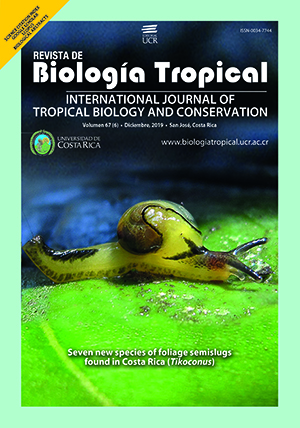Abstract
Hypericum is a genus belonging to the Hypericaceae family, which has 469 species of herbs, trees and shrubs. Two sections in particular: Brathys and Trygynobrathys are an integral part of the Paramo vegetation type. Taking into account its composition and the antidepressant activity properties reported for this plant, the histochemistry and anatomy of Hypericum juniperinum collected in the Colombian Paramo is described. To achieve this goal, the aerial organs (stems, leaves and flowers) of Hypericum juniperinum were collected in the village Arbolocos of the municipality of Cuitiva, Boyacá (voucher code No.589611, COL). For the anatomical analysis, the organs of H. juniperinum were processed with fixation techniques, incorporation in paraffin, cutting in microtome and staining with Astra-blue and basic fuchsin; for the histochemical analysis freehand cuts were made with specific stains for lipids, phenol compounds, alkaloids and pectins. The anatomy of the organs of H. juniperinum should be understood in the context of the living conditions of the Paramo. The leaves are highly xeromorphic as they are chartaceous, rosette-shaped, convolute and upright, with parenchyma in bistratified palisade, thickened walls, thick cuticle and epicuticular wax in the two foliar epidermis, stomata on the abaxial side and with epidermal chamber. However, it has some mesomorphic characteristics such as parenchymatic bundle sheath and loose spongy parenchyma. Hypericum juniperinum presents translucent glands in leaves, calyx and gynoecium, and lacks black glands typical of the Hypericum section where the medicinal plant Hypericum perforatum belongs. Histochemical analysis showed lipids in leaf canals, radial parenchyma of the stem and in some floral structures. Phenolic compounds were detected along the leaf, in the phloem of the stem and in the anthers. Hypericum juniperinum lacks alkaloids and presents pectins in the parenchyma of the sheath surrounding the vascular bundle of the leaf. In this way, the present work contributes by relating the metabolites with their distribution in the tissues of this native species. In addition, the anatomy showed that H. juniperinum has characteristics of a plant from Paramo. The description given here could be used as a preliminary monograph of plants from the Hypericum genus with promising therapeutical properties.
##plugins.facebook.comentarios##

This work is licensed under a Creative Commons Attribution 4.0 International License.
Copyright (c) 2019 Xavier Marquínez-Casas, Laura-Alejandra Mejía-Agudelo, Juan-Camilo Marín-Loaiza






